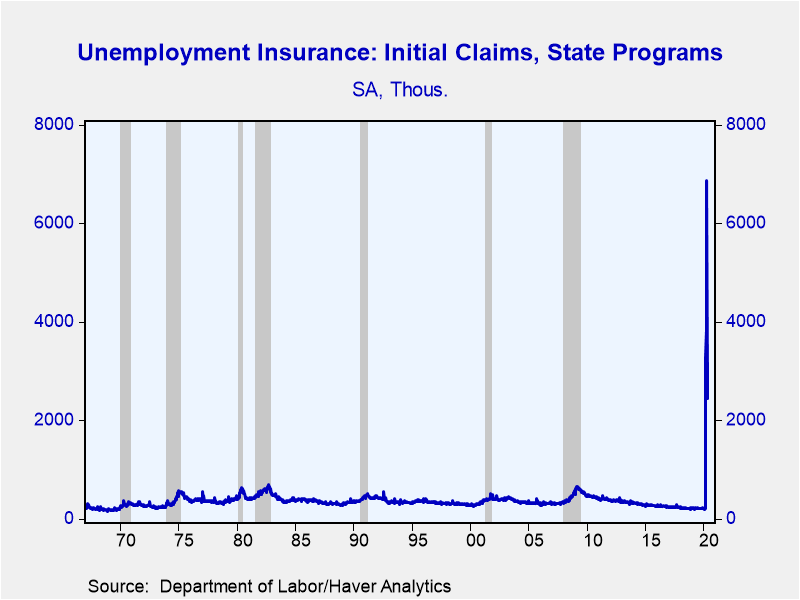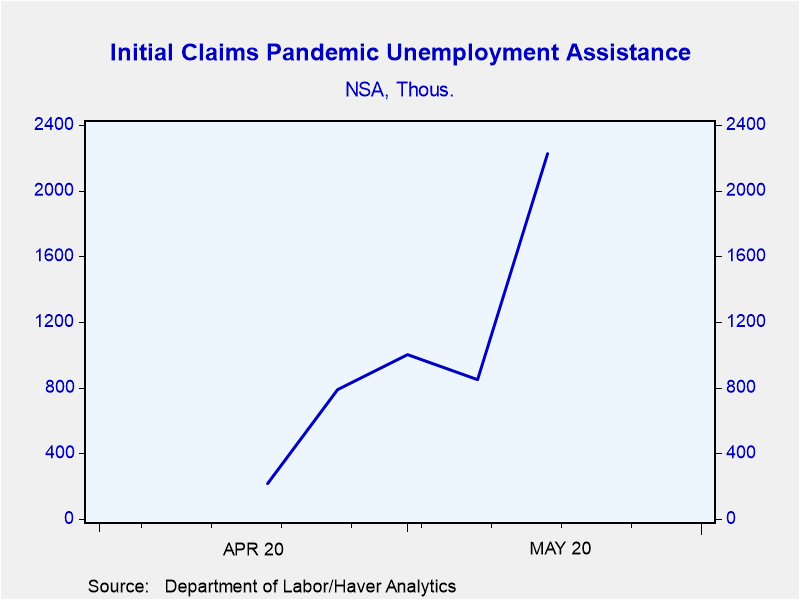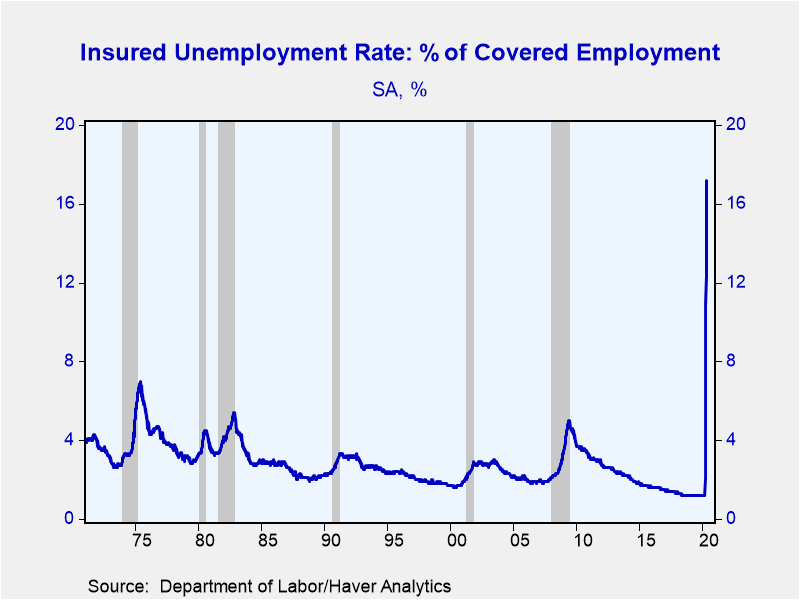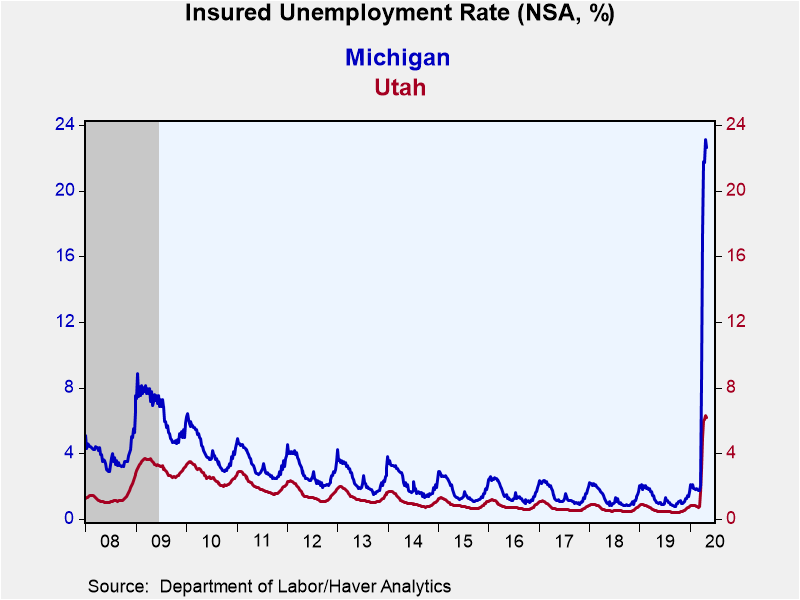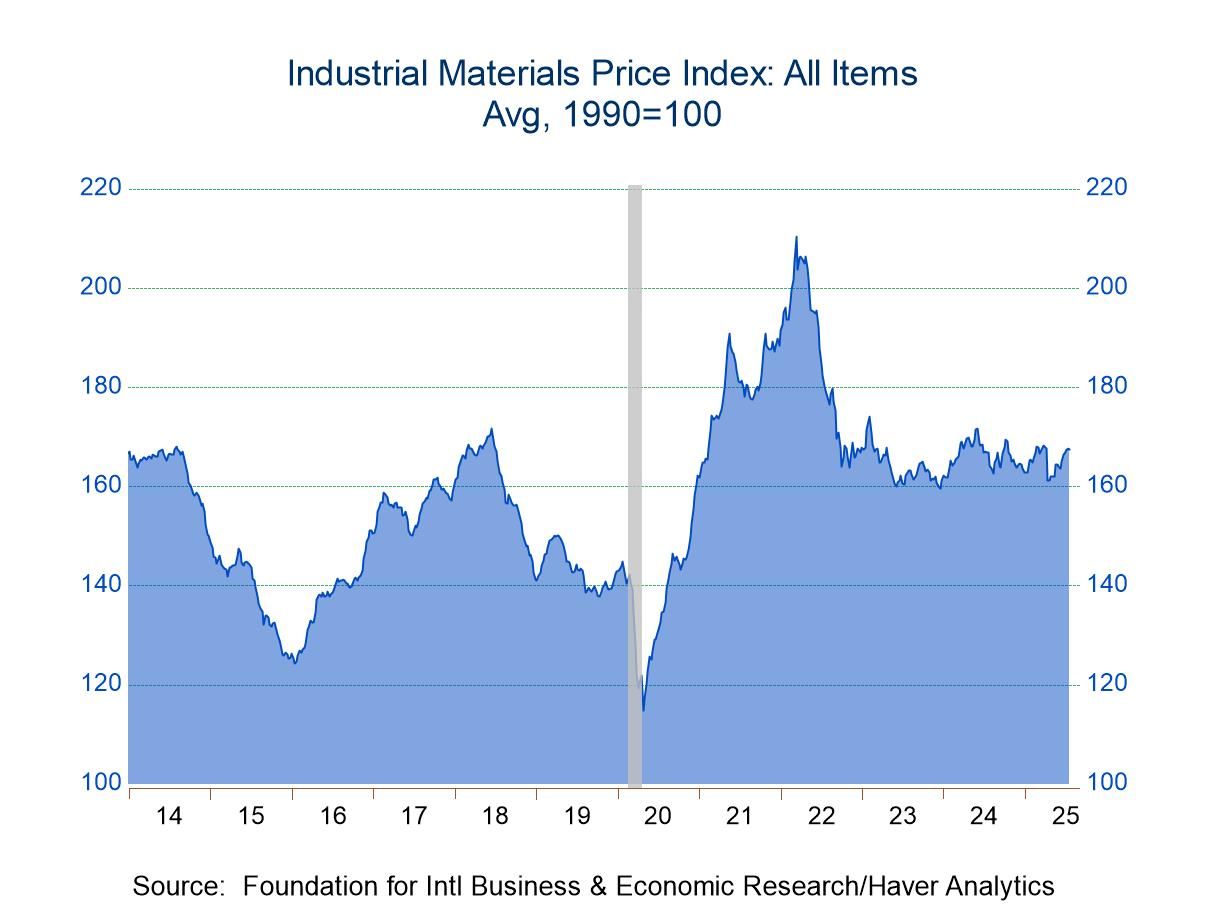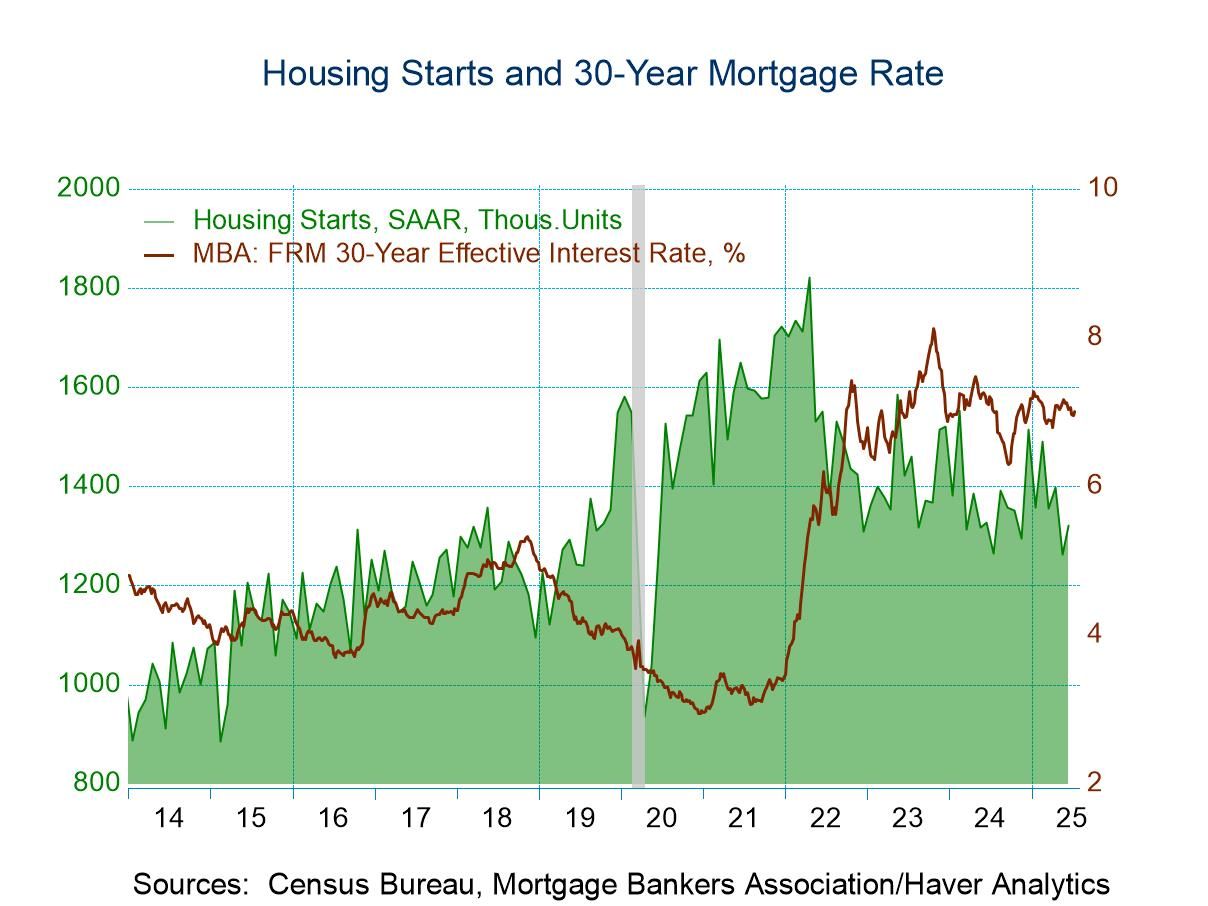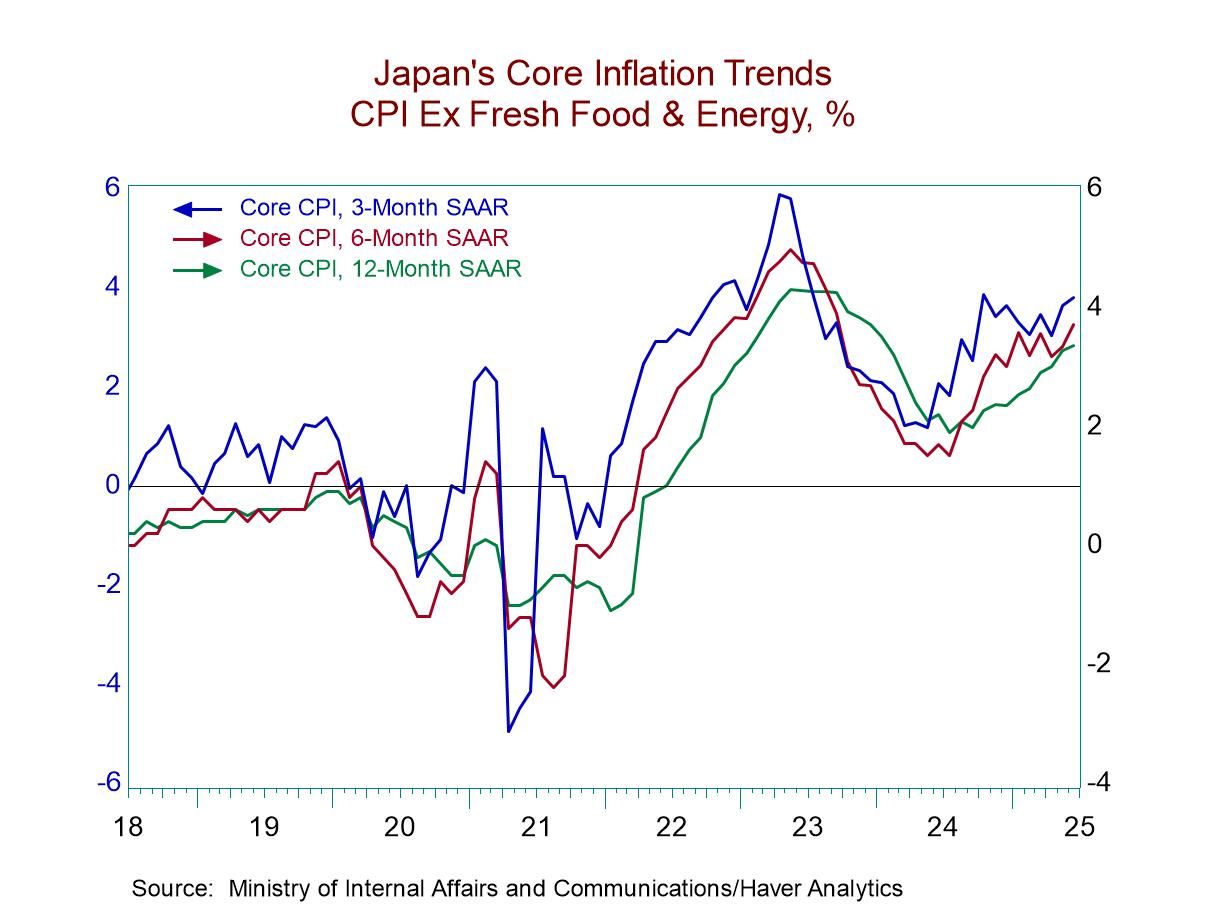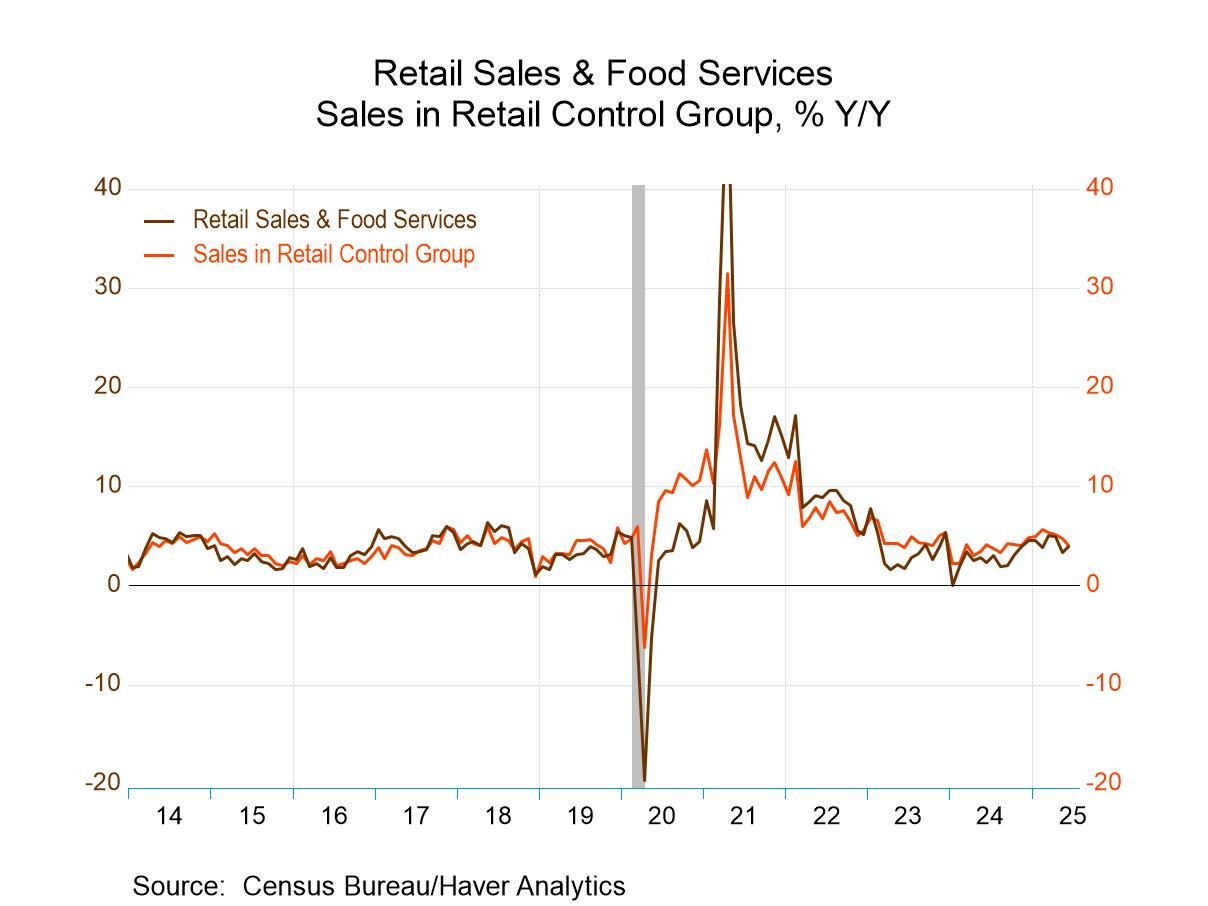 Global| May 21 2020
Global| May 21 2020State & Pandemic Assistance Initial Claims Total 43.7 Million in Last Nine Weeks
Summary
• Initial jobless claims declined to a still extremely-elevated 2.438 million in the week ending May 16. • Federal Pandemic Unemployment Assistance program claims jumped to 2.227 million new filers, likely the result of processing [...]
• Initial jobless claims declined to a still extremely-elevated 2.438 million in the week ending May 16.
• Federal Pandemic Unemployment Assistance program claims jumped to 2.227 million new filers, likely the result of processing catch-up.
• Thirty-seven states had insured unemployment rates above 10%, with three over 20%.
Initial jobless claims for unemployment insurance decreased to 2.438 million during the week ending May 16 from a downwardly-revised 2.687 million (was 2.981 million). The revision was predominantly the result of a 268,634 downward revision to claims in Connecticut, which had flagged a reporting error last week. During the last nine weeks 38.6 million people or 23.7% of the labor force have filed new jobless claims. The Action Economics Forecast Survey anticipated 2.35 million claims.
The four-week moving average of initial claims, which smooths out week-to-week volatility, but is less important at the moment because of the rapidity of changing conditions, declined to 3.042 million from 3.543 million.
Claims for the federal Pandemic Unemployment Assistance (PUA) program, which covers individuals such as the self-employed who are not qualified for regular/state unemployment insurance, jumped to 2.227 million in the week ending May 16 from 850,184. This jump likely reflects a catch-up in processing of claims as states have had to create new systems for this program. PUA claims totaled 5.1 in the five weeks that data has been reported. Data for this and other federal programs are not seasonally adjusted.
Continuing claims for unemployment insurance jumped to a record 25.073 million in the week ending May 9, from a slightly downwardly-revised 22.548 million (was 22.833 million). Continuing PUA claims, which are lagged an additional week, almost doubled to 6.121 million. Pandemic Emergency Unemployment Compensation claims rose to 162,727 in the week ending May 2. This program covers people who were unemployed before COVID but exhausted their state benefits and are now eligible to receive an additional 13 weeks of unemployment insurance, up to a total of 39 weeks.
The insured rate of unemployment jumped to a new high of 17.2% (data goes back to 1971). The state insured rates of unemployment continued to show wide variation with South Dakota at just 5.6% and Nevada at 23.5%. Thirty-seven states had rates over 10%, and three states were over 20%, including Washington and Michigan. The only large state with an insured unemployment rate under 10% was Texas at 9.6%. California was 16.5% while New York had the highest rate of the large states at 19.6%. The state rates are not seasonally adjusted.
Data on weekly unemployment claims going back to 1967 are contained in Haver's WEEKLY database, and they are summarized monthly in USECON. Data for individual states are in REGIONW. The expectations figure is from the Action Economics Forecast Survey, carried in the AS1REPNA database.
| Unemployment Insurance (SA, 000s) | 05/16/20 | 05/09/20 | 05/02/20 | Y/Y % | 2019 | 2018 | 2017 |
|---|---|---|---|---|---|---|---|
| Initial Claims | 2,438 | 2,687 | 3,176 | 1,045 | 218 | 221 | 244 |
| 4-wk Average | 3,042 | 3,543 | 4,181 | -- | -- | -- | -- |
| Initial Claims Pandemic Unemployment Assistance (NSA) | 2,227 | 850 | 1,003 | -- | -- | -- | -- |
| Continuing Claims | -- | 25,073 | 22,548 | 1,390 | 1,701 | 1,756 | 1,961 |
| 4-week Average | -- | 22,002 | 19,689 | -- | -- | -- | -- |
| Continuing Claims Pandemic Unemployment Assistance (NSA) | -- | -- | 6,121 | -- | -- | -- | -- |
| Insured Unemployment Rate (%) | -- | 17.2 | 15.5 |
1.2 |
1.2 | 1.2 | 1.4 |
Gerald D. Cohen
AuthorMore in Author Profile »Gerald Cohen provides strategic vision and leadership of the translational economic research and policy initiatives at the Kenan Institute of Private Enterprise.
He has worked in both the public and private sectors focusing on the intersection between financial markets and economic fundamentals. He was a Senior Economist at Haver Analytics from January 2019 to February 2021. During the Obama Administration Gerald was Deputy Assistant Secretary for Macroeconomic Analysis at the U.S. Department of Treasury where he helped formulate and evaluate the impact of policy proposals on the U.S. economy. Prior to Treasury, he co-managed a global macro fund at Ziff Brothers Investments.
Gerald holds a bachelor’s of science from the Massachusetts Institute of Technology and a Ph.D. in Economics from Harvard University and is a contributing author to 30-Second Money as well as a co-author of Political Cycles and the Macroeconomy.


